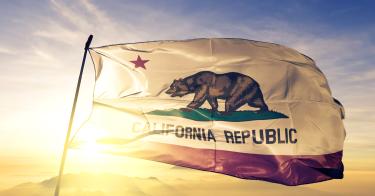Sen. Elizabeth Warren, D-Massachusetts, thinks that populous coastal states like California and New York are being done a grave disservice by the Electoral College. Warren recently bemoaned the fact that presidential candidates ignore these populous, but safely blue, states in favor of battleground states. That’s why she thinks we should supersede the Electoral College with a national popular vote to determine who holds the White House.
But do candidates ignore these states under our current system? Hardly. In fact, Hillary Clinton visited California nearly 70 times over the course of her 2016 campaign. By comparison, Clinton made only seven visits to Michigan – a state she narrowly lost to Donald Trump. Democratic front-runner Joe Biden has already hosted fundraisers in the Bay Area and Los Angeles and is currently planning a tour of New York. Moreover, in 2016, both presidential candidates set up their campaign headquarters in New York City.
Blue, coastal cities will always enjoy political influence because they are the cultural and economic hubs of our country. Financial institutions, tech companies, and media conglomerates – the supermajority of which are located in New York or California – will always have an entrée to the Oval Office. Mark Zuckerberg, Jeff Bezos, and Bob Iger are not the “forgotten men” even if they don’t live in swing states.
Coastal meccas are also where most wealthy campaign donors reside. Of the 100 top individual donors in the 2016 election cycle, over half live in one of four metropolitan areas: New York (26 percent), San Francisco (13 percent), Los Angeles (8 percent), and Chicago (6 percent).
Progressives may retort that, despite the frequent trips presidential candidates take to California and New York, they never see the plight, nor hear the concerns, of ordinary San Franciscans, Angelinos, or New Yorkers. During trips to the Bay Area and Manhattan, presidential candidates are hobnobbing at cocktail parties and swanky dinners, not pressing the flesh at greasy spoons and discount shopping stores.
While not all candidate visits are aimed at the same segment of the population, if the Electoral College were replaced with a national popular vote, every candidate’s campaign would focus on the same few zip codes. If winning an election was a simple matter of garnering the most votes nationwide, candidates would naturally focus their attention on the limited number of locations where the most voters live – namely, major cities.
Electoral campaigns simply do not have the time or the money to visit every part of the country; states with neither big donors, nor sprawling cities, would be left out. It is anyone’s guess how long voters in so-called “fly-over country” would be content to watch presidential candidates race by overhead, but they will inevitably start to feel that Washington, D.C., is hopelessly out of touch and alien.
While progressives ignore the negative consequences of a national popular vote, they greatly exaggerate the positive impact on voters in coastal states like California. It is unlikely that voters in Bakersfield or San Bernardino, Redding or Rio Linda would see any more of presidential candidates than they do now. If state borders no longer mattered in presidential elections, it is unlikely candidates would spend any time in rural – or even suburban – areas.
Under the Electoral College, presidential candidates journey to nearly every corner of hotly contested swing states. Even populous states like Ohio or Pennsylvania can be thoroughly canvassed over the course of a campaign and, knowing that a handful of voters can swing all of a state’s Electoral College votes, most presidential candidates do exactly this. So in these swing states, it is equally common to see presidential aspirants at rural coffee shops and industrial plants, suburban town halls, and metropolitan stadiums. With the national popular vote, a loop around the BART or Metrolink would become the 21st century version of the old whistle-stop tour.
No electoral system will force presidential candidates to visit all 3,000 counties in the country. But our current system ensures that the few cities that already shape our economy and culture do not thoroughly dominate our electoral politics as well.
The Electoral College gives a voice to broad regions of the country that might otherwise be ignored and unheard. Indeed, our mode of electing presidents is not just a boon for the forgotten men and women of the Rust Belt and Bible Belt, but for voters in central California and upstate New York, with which they have much in common.
This piece originally appeared in The Orange County Register



